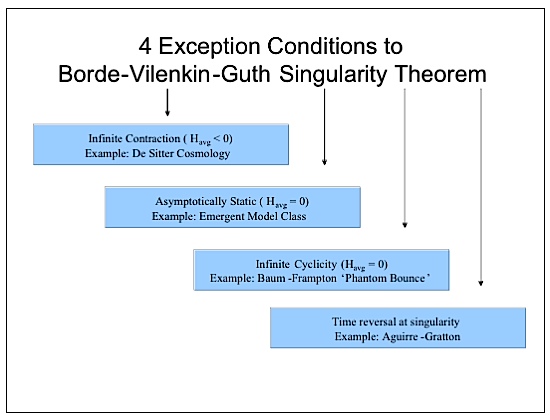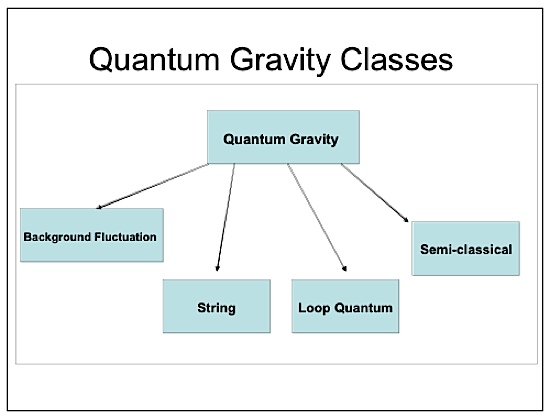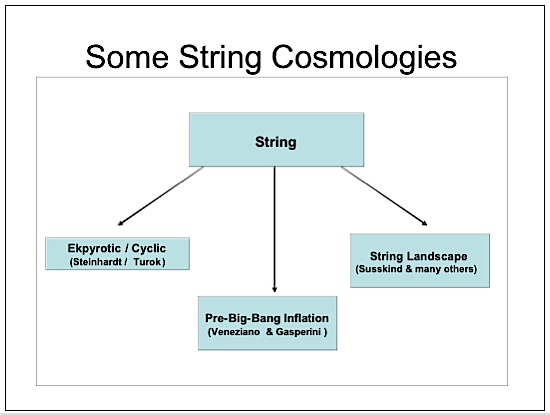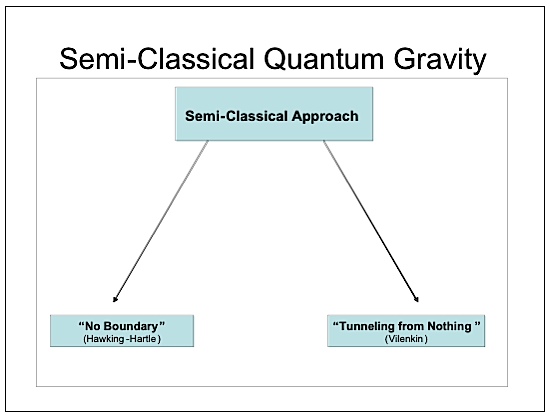ReasonableFaith.org
Question:
I recently was told by some physicists whom I had the chance to interview for a paper that the standard big bang model of the universe does not include a singularity anymore. That may have been the case twenty five years ago, they said, but nowadays physicists say that the big bang extends only back to Planck time. Can you PLEASE clarify the confusion I’m having on this?
God bless,
Glenn
Dr. Craig responds:
I’m just in the process of wrapping up an article on the kalam cosmological argument co-authored with James Sinclair for a forthcoming volume with Blackwell entitled Companion to Natural Theology. Jim is writing the section on the empirical evidence of astrophysical cosmology for the beginning of the universe. He does a marvelous job of summarizing the current state of the field, a preview of which I’ll give you here.
First, though, in answer to your question, the standard Big Bang model includes an initial singularity. The model cannot lose that feature and remain the same model. So there’s no question of the standard model’s not including a singularity anymore. Rather what the physicists you interviewed meant is that the standard model is no longer the prevailing view today. Their claim is that while the standard model was the accepted view 25 years ago, that is no longer the case today.
Now in one sense that’s true. The standard Big Bang model needs to be modified in various ways. For example, the model is based on Einstein’s General Theory of Relativity. But Einstein’s theory breaks down when space is shrunk down to sub-atomic proportions. We’ll need to introduce quantum physics at that point, and no one is sure how this is to be done. That’s what your physicists meant when they said that the Big Bang extends back only as far as the Planck time. (That, by the way, is no new realization; everyone always knew that General Relativity breaks down by that point.) Moreover, the expansion of the universe is probably not constant, as in the standard model. It’s probably accelerating and may have had a brief moment of super-rapid, or inflationary, expansion in the past.
But none of these adjustments need affect the fundamental prediction of the standard model of the absolute beginning of the universe.
Indeed, Jim’s survey of contemporary cosmology reinforces just how robust the standard model’s prediction of an absolute beginning continues to be. He considers three broad research programs being currently pursued based on possible exceptions to the Hawking-Penrose singularity theorems, which support the standard model’s prediction of an initial cosmological singularity. These are (1) Closed Timelike Curves, (2) Violation of the Strong Energy Condition (Eternal Inflation), and (3) Falsity of General Relativity (Quantum Gravity). The first of these postulates an exotic spacetime which features circular time in the past and so is not taken very seriously by the vast majority of cosmologists. The real work has been on the other two alternatives.
With respect to the alternative of Eternal Inflation, it was suggested by some theorists during the 1980s that perhaps the inflationary expansion of the universe was not confined to a brief period early in the history of the universe but is eternal in the past, each inflating region being the product of a prior inflating region. Although such models were hotly debated, something of a watershed appears to have been reached in 2003, when three leading cosmologists, Arvin Borde, Alan Guth, and Alexander Vilenkin, were able to prove that any universe which has, on average, been expanding throughout its history cannot be infinite in the past but must have a past space-time boundary.
What makes their proof so powerful is that it holds regardless of the physical description of the universe prior to the Planck time. Because we can’t yet provide a physical description of the very early universe, this brief moment has been fertile ground for speculations. (One scientist has compared it to the regions on ancient maps labeled “Here there be dragons!”—it can be filled with all sorts of fantasies.) But the Borde-Guth-Vilenkin theorem is independent of any physical description of that moment. Their theorem implies that even if our universe is just a tiny part of a so-called “multiverse” composed of many universes, the multiverse must have an absolute beginning.
Vilenkin is blunt about the implications:
It is said that an argument is what convinces reasonable men and a proof is what it takes to convince even an unreasonable man. With the proof now in place, cosmologists can no longer hide behind the possibility of a past-eternal universe. There is no escape, they have to face the problem of a cosmic beginning (Many Worlds in One [New York: Hill and Wang, 2006], p.176).
Some current cosmological speculation is based upon attempts to craft models based upon possible exceptions to the Borde-Guth-Vilenkin condition that the universe has on average been in a state of cosmic expansion. In his article Jim provides the following chart of possibilities:

The first case involves an infinite contraction prior to the singularity, followed by our current expansion. The second case postulates an unstable initial state followed by an inflationary expansion. The third case imagines a contraction followed by a super-expansion fueled by ‘dark’ energy, with the universe breaking into a multiverse. The fourth case postulates two mirror-image, inflationary expansions, where the arrows of time point away from the cosmological singularity. Jim shows that these highly speculative models are all either in contradiction to observational cosmology or else wind up implying the very beginning of the universe they sought to avert.
The other alternative to the Hawking-Penrose theorems that has been vigorously pursued is Quantum Gravity models. Jim provides the following chart of such models:

The first class of models postulates an eternal vacuum space in which our universe originates via a quantum fluctuation. It was found that these models could not avoid the beginning of the vacuum space itself and so implied the absolute beginning of spacetime. These models did not outlive the early 1980s.
The second class, string theoretical models, have been all the rage lately. They are based upon an alternative to the standard model of particle physics which construes the building blocks of matter to be, not pointlike particles, but one dimensional strings of energy. Jim discusses three types of string cosmological models:

The first of these string cosmologies, Ekpyrotic cyclic models, is subject to the Borde-Guth-Vilenkin theorem and so is admitted to involve a beginning of the universe. The second group, Pre-Big Bang models, cannot be extended into the infinite past if they are taken to be realistic descriptions of the universe. The third group, the string landscape models, feature the popular multiverse scenario. They are also subject to the Borde-Guth-Vilenkin theorem and so imply a beginning of the universe. Thus, string cosmological models do not serve to avert the prediction of the standard model that the universe began to exist.
The third class of Quantum Gravity models, Loop Quantum Gravity theories, features versions of a cyclical universe, expanding and contracting. These models do not require an eternal past, and trying to extend them to past infinity is hard to square with the Second Law of Thermodynamics and seems to be ruled out by the accumulation of dark energy, which would in time bring an end to the cycling behavior.
Finally, fourth, the Semi-classical Quantum Gravity models include the famous Hartle-Hawking model and Vilenkin’s own theory:

These models feature an absolute beginning of the universe, even if the universe does not come into being at a singular point. Thus, Quantum Gravity models no more avoid the universe’s beginning than do purported Eternal Inflationary models.
In sum, I think you can see how misleading the physicists’ statements to you were. The prediction of the standard model that the universe began to exist remains today as secure as ever—indeed, more secure, in light of the Borde-Guth-Vilenkin theorem and that prediction’s corroboration by the repeated and often imaginative attempts to falsify it. The person who believes that the universe began to exist remains solidly and comfortably within mainstream science.